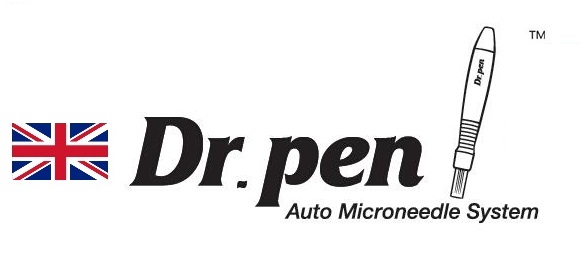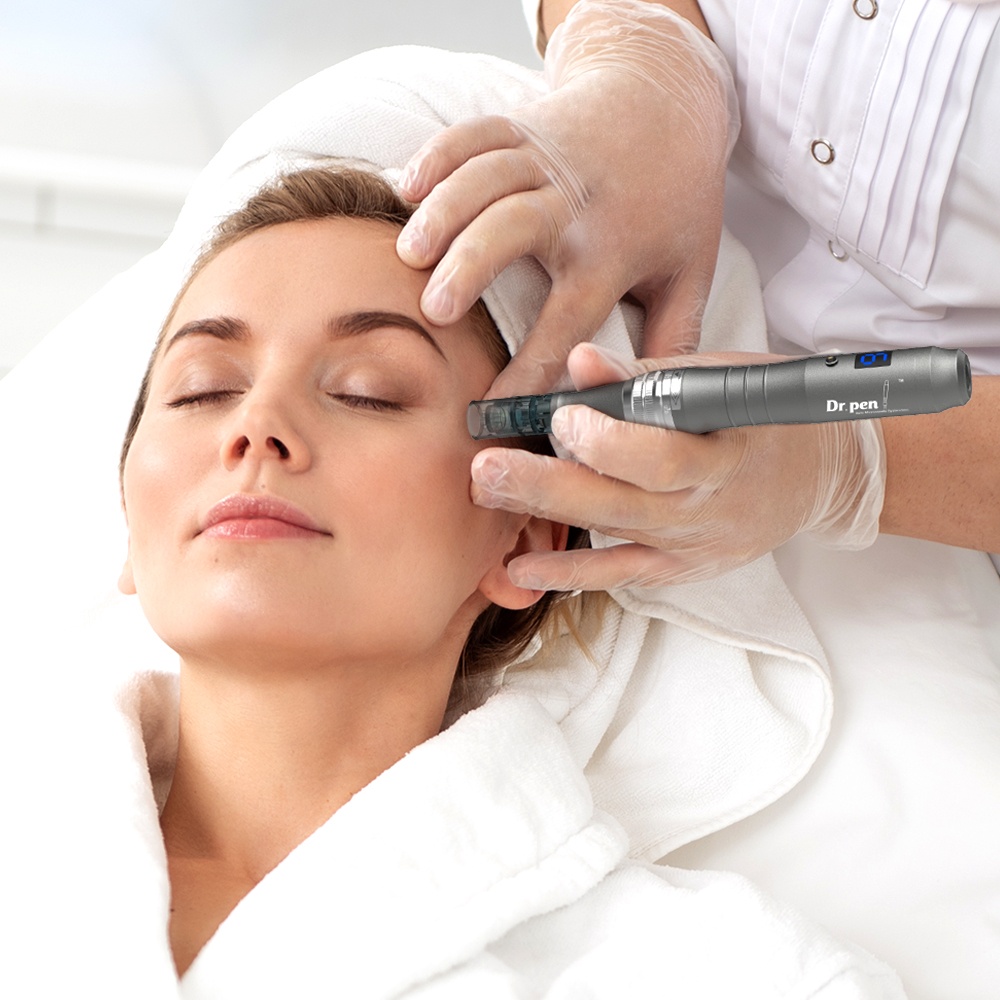drpen, microneedling, nanoneedling, skincare
A Guide to Microneedling
What is microneedling?
Microneedling is a cosmetic non invasive procedure to approve the appearance of your skin. People turn to microneedling (sometimes also referred to as nanoneedling) for many different types of reasons. Some of the reasons are to improve the appearance of fine lines and wrinkles, even out skin tone, rid themselves of dark eye circles, reduce scaring etc. There are so many different skin concerns that can be treated. This is why the use of Dr Pen in microneedling procedures in a salon or at home is becoming more and more popular. The Dr Pen Auto Microneedle System is a revolutionary micro-needling skincare device which aims to tighten, lift and rejuvenate your skin.
What does the microneedling procedure actually involve?
Microneedling uses tiny needles from a motorised microneedling pen like Dr Pen to make microscopic punctures in the skin. The device will be moved around the treatable areas on the body or face. Microneedling is also referred to as Collagen Induction Therapy (CIT). This is because the microscopic punctures created during the treatment (microchannels) trigger a trauma/healing response in your skin. Your skin perceives that there has been a small injury and as a result, floods the tissue with the signal to naturally produce more collagen and elastin to heal the ‘wound’. As the skin heals, skin imperfections soften and even disappear completely with a number of treatments over a length of time. We stock a range of needle types from 9 pin to 42 pin and nano. The choice of needle will depend on the area and issue you want to treat.

Who can try microneedling and is it safe?
You should only use Dr Pen products for micro and nano needling that are sold by official trusted distributors like us at dr-pen UK. Microneedling is a fantastic procedure for anyone who wishes to restore vitality to their complexion and anyone who wishes to heal skin imperfections and fight the visible signs of ageing. That being said some individuals will need to take greater safety precautions. There are some conditions that will preclude individuals from safely performing microneedling, or will mean that microneedling will need to be cleared by a medical professional first. Some of these conditions are eczema, rosacea, contagious skin conditions, active acne and fungal infections. Its also recommended to chat to a dermatologist if you have ever had chemical peels, laser or cosmetic surgery, filler injections and Botox.
What needle types and depth should I use?
If your new to microneedling you should start on the lowest depth of 0.20. Use a slow speed as this will allow you to get a sense of how the pen moves and get used to using the device. As you build up your control and confidence, you may then like to adjust the depth and speed of the device accordingly. Using any needle depth higher than 1.00 should only be done by a trained technician. It’s also important to consider the type of skin that you’re treating, as thicker skin (such as mature skin or skin with stretch marks and scar tissue) may require a slightly deeper treatment to get the optimum results. You can check out these handy Dr Pen UK pictures for guidance on microneedling depth and needle cartridge type.

Which skincare products are the most effective during and after microneedling?
Skin care products used during and after microneedling (such as serums) work best when applied while all the microchannels that you made are open. Deeper delivery/penetration of skincare products during and after microneedling allow our skincare to work more effectively to achieve its goals. When choosing skincare products to apply after microneedling, stick to the following guidelines:
Opt for products with a high purity of ingredients
Look for low-irritant ingredients and hydrating ingredients (Hyaluronic Acid is amazing)
Avoid active ingredients (such as AHAs, BHAs, retinols), toners and exfoliants
Can I get a step by step guide to aftercare?
Yes! If you are micro or nano needling at home make sure to follow these steps…if your treatment is being done by a professional ask them for their expert aftercare advice.
After treatment: Wash your face with a gentle cleanser and apply a nourishing moisturiser. Avoid products containing fragrances or active ingredients (vitamin C, A/Retinols), acids (lactic acid, AHA, BHA), scrubs or toners which may cause irritation. Your skin may experience mild swelling, bruising, peeling and flaking. You can minimise the dryness/flakiness during the healing process by keeping the skin moisturised, which will reduce shedding and alleviate tightness. Avoid exercising, sweating excessively, swimming or applying makeup for 24 hours. You must apply a high protection sunscreen when going outdoors, and avoid prolonged sun exposure.
48 Hours After: Begin to gently exfoliate the dry/flaking skin to help speed up the recovery process, and continue to hydrate the skin, morning and night. Please note that this step is totally optional and if you choose to exfoliate to speed along the process, be sure not to exfoliate with any chemical or physical exfoliants, as both can irritate your skin as it heals. Do not exfoliate if the skin feels too sensitive – the flakiness and dryness of the skin will naturally subside.
3-5 Days Post-Treatment: Continue to apply a high protection sunscreen daily and avoid direct and extended sunlight for up to 1-week post-needling. Your skincare routine should focus on hydrating and moisturising products, continuing to avoid active ingredients, acids, scrubs and toners.
7+ Days Post-Treatment: You may return to your regular skincare routine. If at any point you’re concerned about the progression of your skin’s healing, or if you feel that you’re bleeding or bruised excessively, please speak to a dermatologist.






